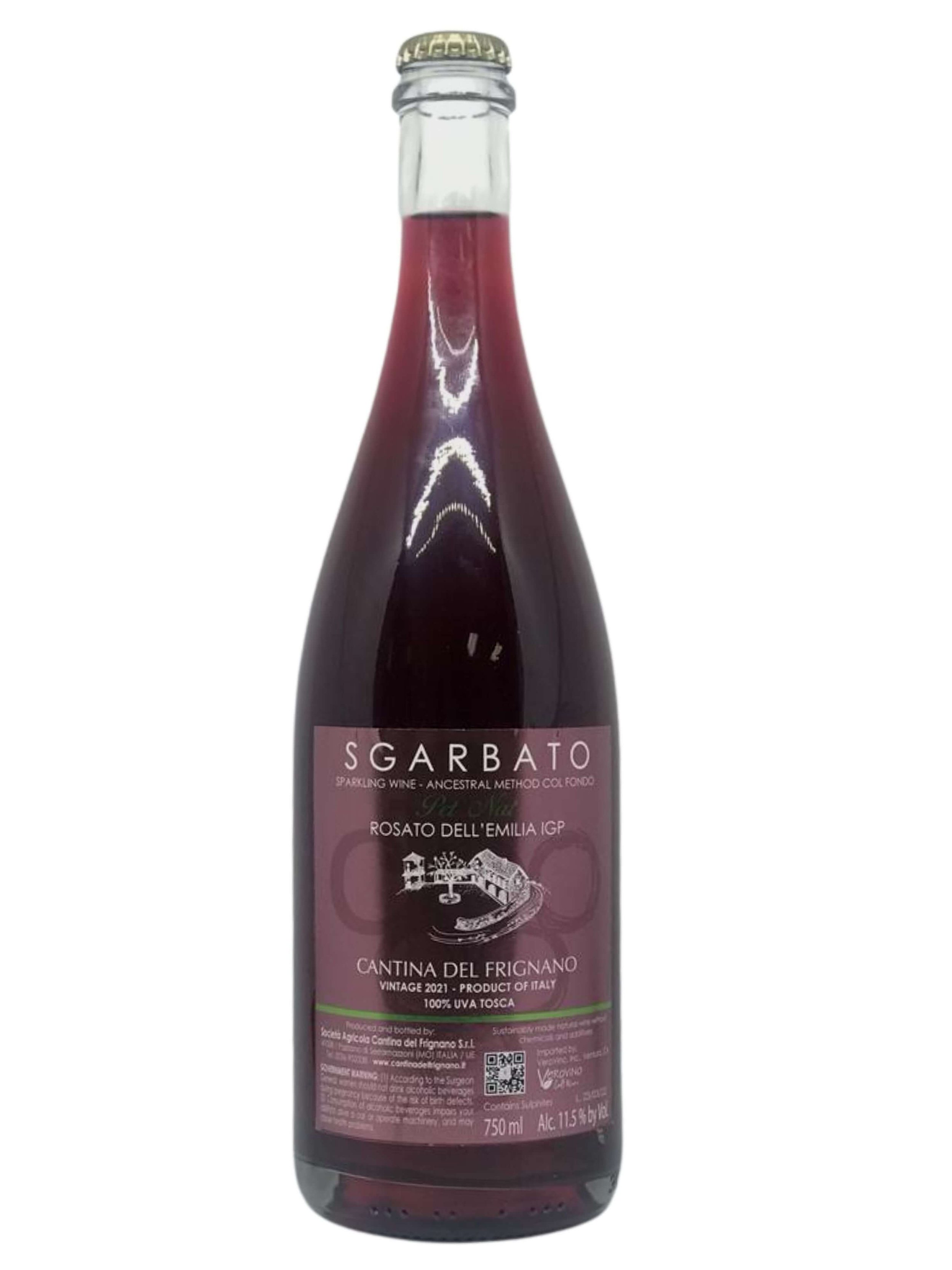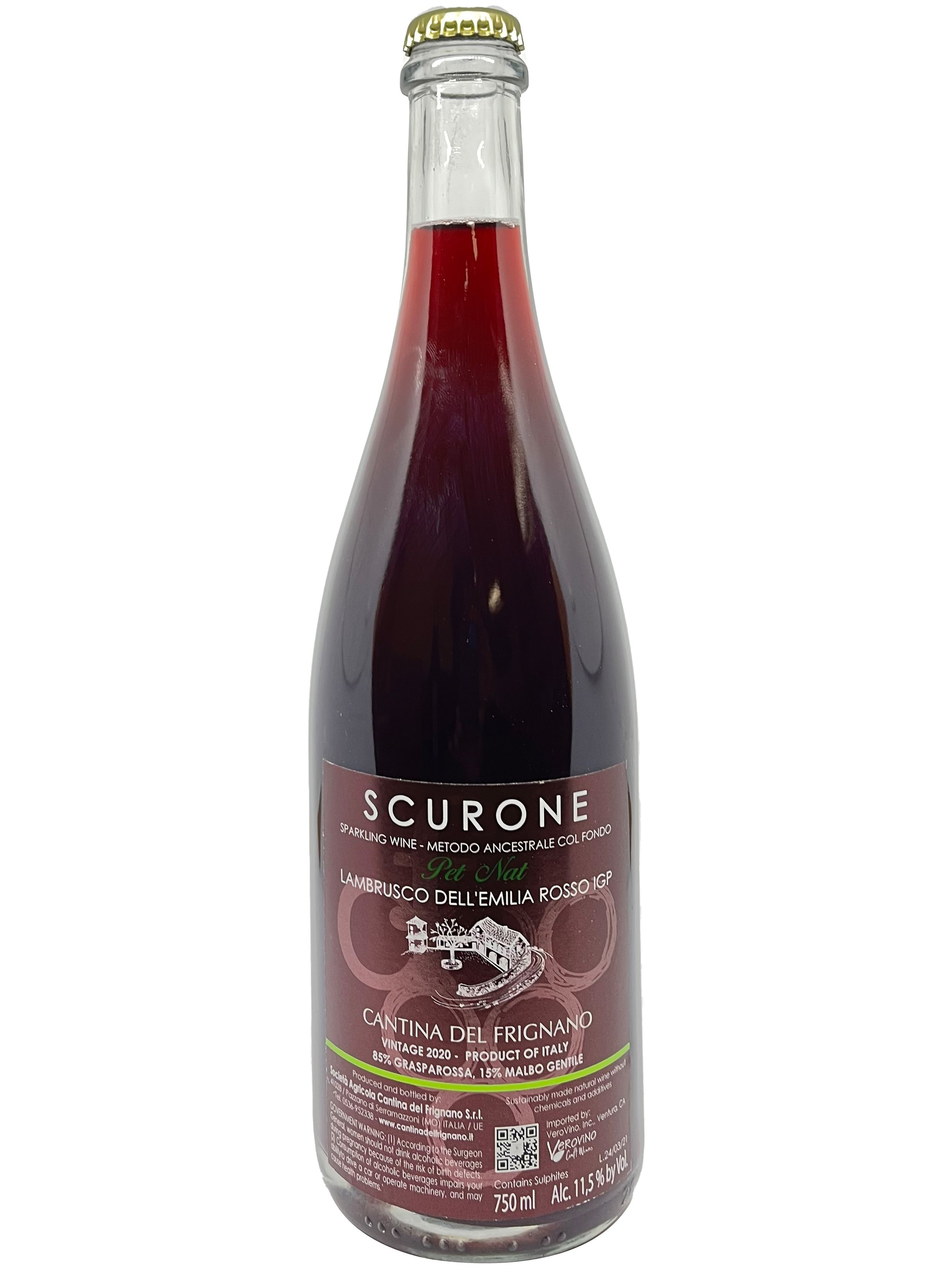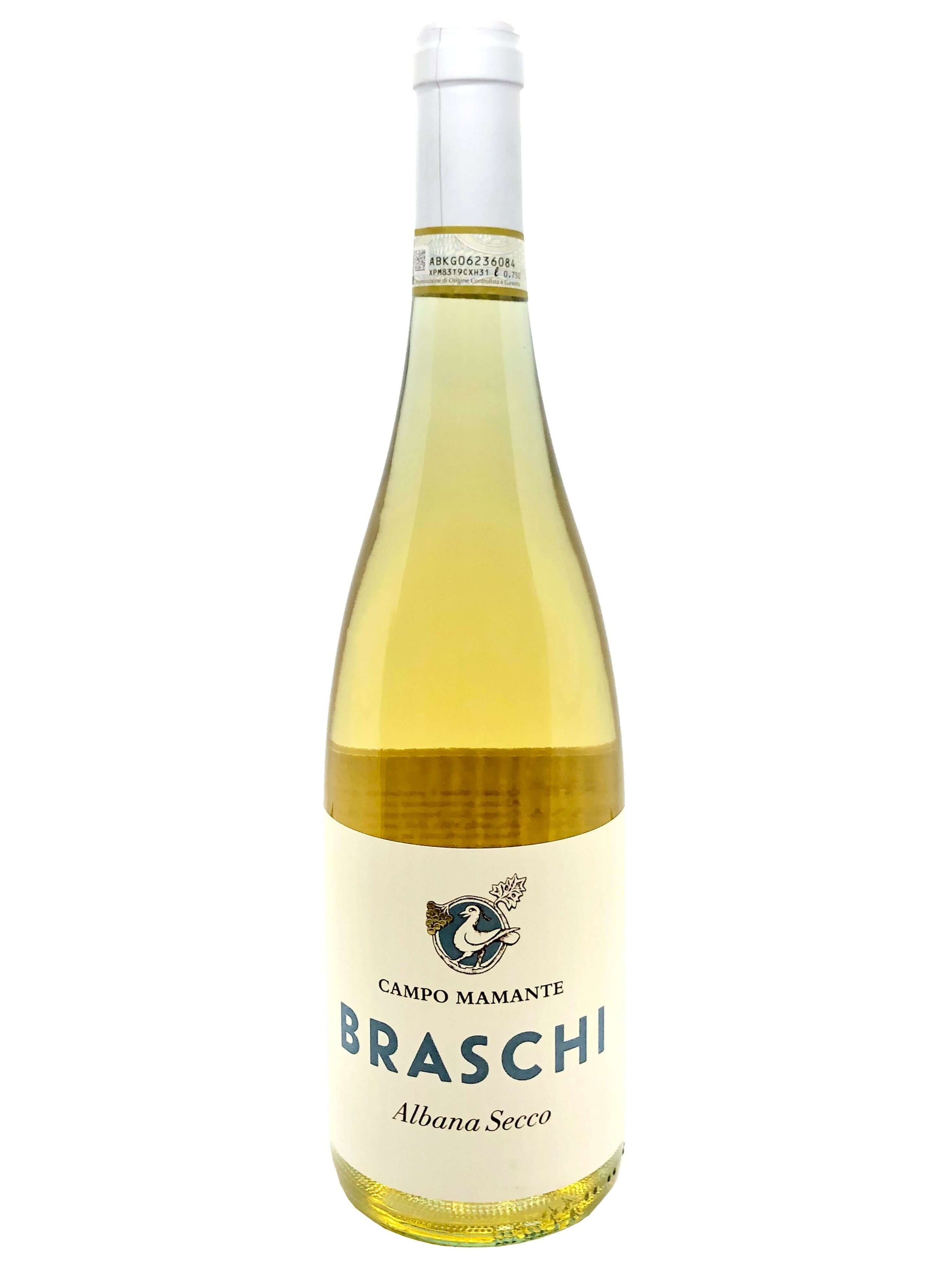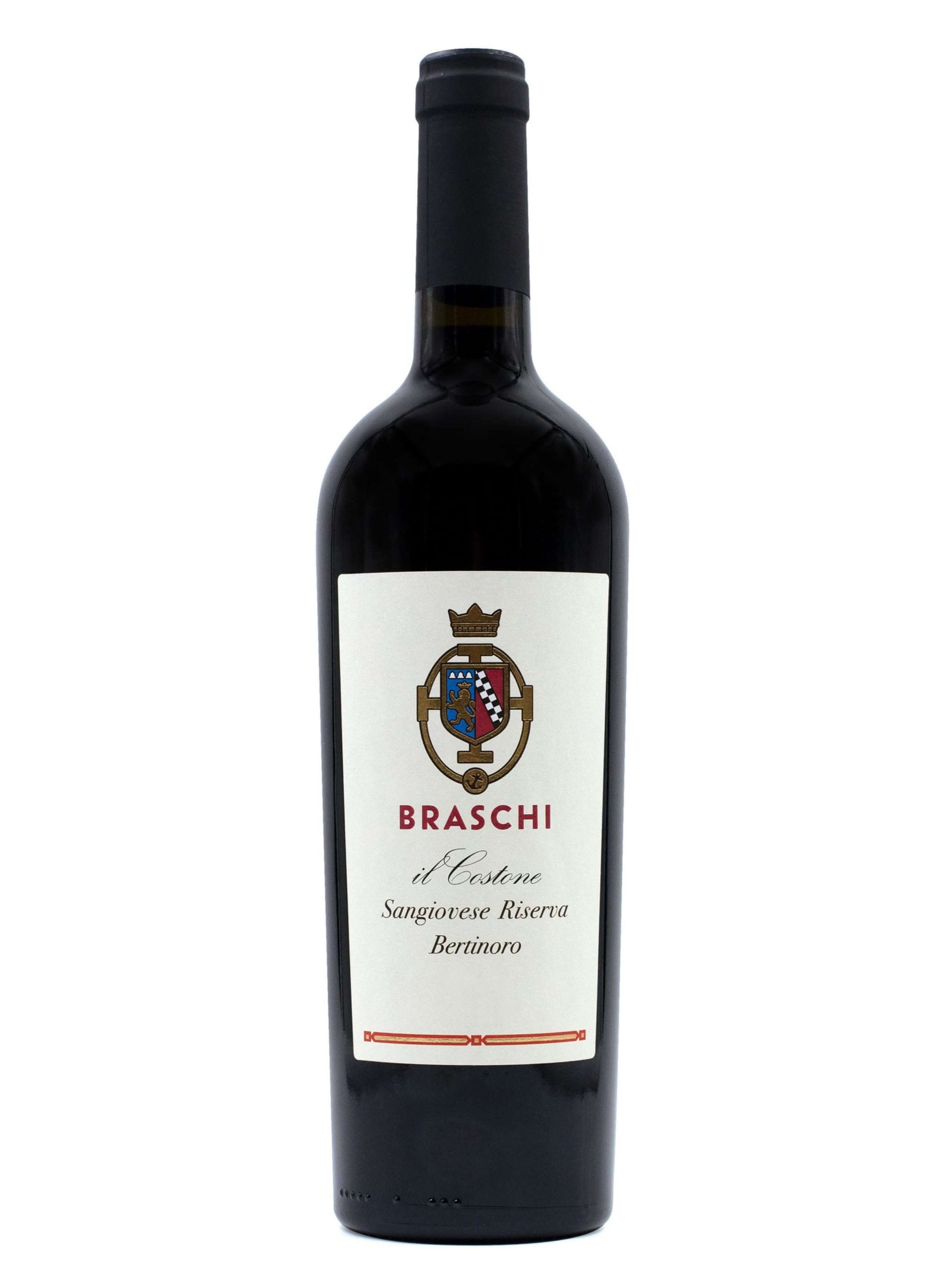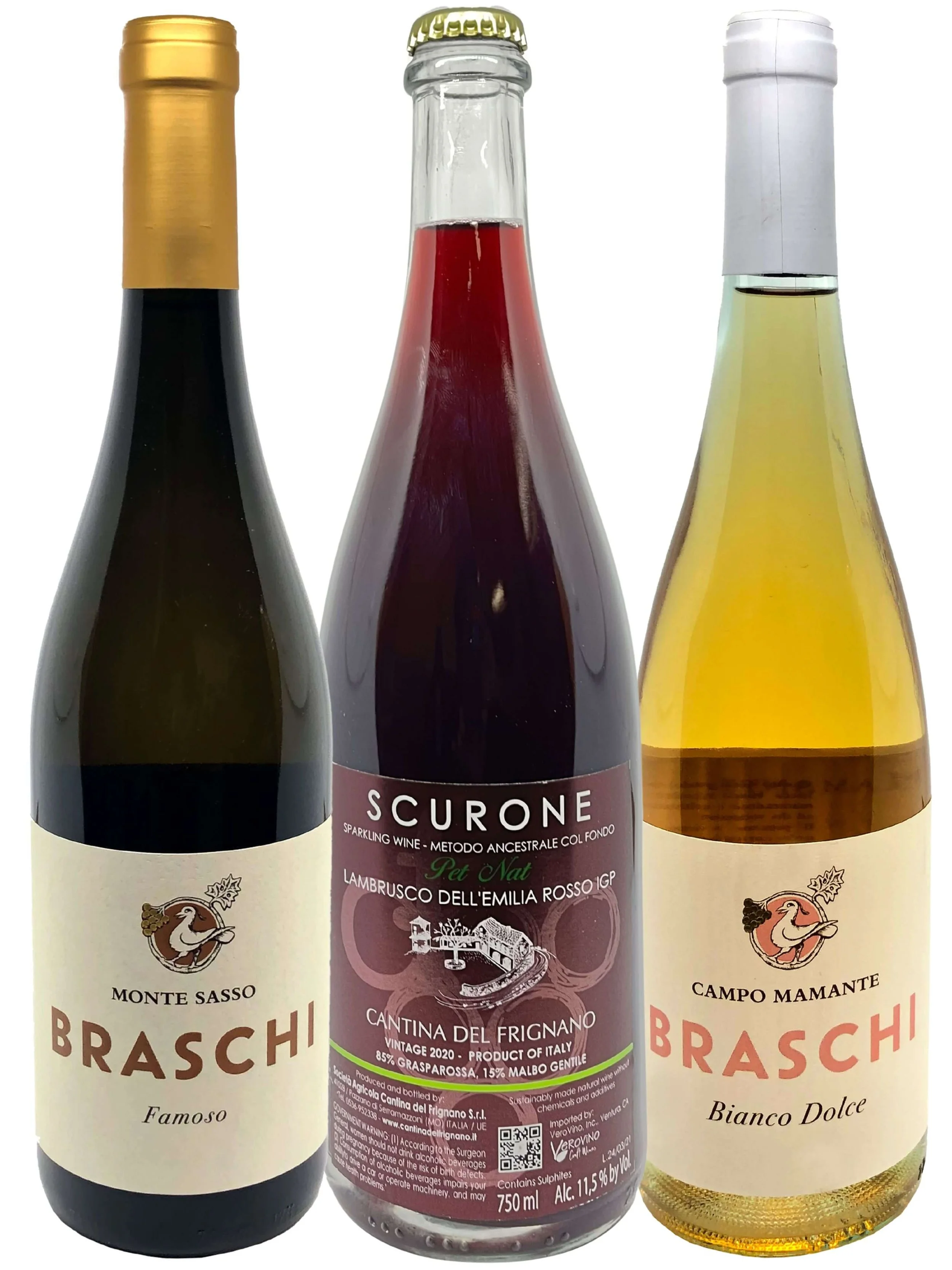Love Letter to Emilia Romagna
Vineyard property in Romagna, split in half by flood damage this past week.
Emilia Romagna is an overlooked tourist destination. When tourists go on their ‘inaugural tour’ of Italy, they typically hit the main tourist cities, like Rome, Florence, Venice. Little do they know that they pass right through Bologna, the hub of the spoke of North-Central Italy, as they go between Florence and Venice. Yet, it is a region that has left its mark on the culinary world and other diverse areas, from flashy race cars to the more banal, like packaging machines, not mention there’s a ton of history across the region.
This region is “in the news” this past week due to catastrophic floods and rainfall that hit the region hard. Stories are still coming out of people, animals, farms, towns and livelihoods impacted with more damage being reported, while it is still continuing to rain. Let’s learn more about this lesser known region of Italy.
Emilia Romagna’s Backstory
Italy’s history as a country is still pretty new compared to the USA. It’s unification happened only in the mid 1800’s. After which, Italy was divided into regions. Emilia Romagna is a rectangular-shaped region which borders the Lombardy region (think Milan) to the west, the Adriatic Sea to the east, Tuscany to the south and Veneto (think Venice) to the north.
The creation of the Emilia Romagna region was a compromise. It is made up of 2 different “sub cultures” of Italians:
Googling Emilia Romagna this week shows where the worst flooding has taken place so far.
The Emiliani who are to the west, having Bologna, which has the oldest university in the world, as the main city, are known to be more reserved and intellectually minded city folk;
the Romagnoli to the east, with no main city as a focal point but instead smaller cities, are considered more country folk with a strong identity that unites them. The name Romagna derives from its significance in Roman history, having had the Roman Empire seated in Romagna for a period of time. (For more on Romagna check out this article.)
Despite the different nuances of the personalities and history of the Emiliani and Romagnoli, they are blessed with lots of agriculture and food production, making them the “heartland” of Italy with Bologna considered the food capital of Italy. What historically unites the Emiliani and Romagnoli is the old Roman road “via Emilia” that passes through the region from east to west and is still a main thoroughfare across Emilia-Romagna. Also, one of our favorite figures in Italian history is the “badass” medieval woman ruler, Matilde di Canossa, known by us Anglo-Saxon folks as Matilda of Tuscany, which, if you read our blog, will know by now that she has had a big influence on Emilia Romagna, even to this day. (By the way, if you like reading about badass women in history, also read up on Galla Placidia, who was head of the Roman empire while Romagna was the seat, and she left her mark on wines from Romagna too!)
To get to know this region from an insider’s perspective, we spoke to Sheila Donohue, founder of Vero, who has been living in Emilia Romagna for over 20 years.
Vero founder, Sheila Donohue, slipping on a muddy slope while touring Tomisa’s vineyards in the Bolognese Hills.
How did an Irish American New Yorker wind up in Emilia Romagna?
“While working in the NYC area in banking and technology, I heard of a company headquartered in Bologna, Italy specialized in my former field of credit risk management. In 2001, I was invited to come to Bologna for a job interview. It was my first time to Italy. One of my first memories is walking out of the hotel on the ‘main street’ of ‘downtown’ Bologna and getting hit with an egg… It was the height of Carnevale festivities (aka Mardi Gras) and I found out the hard way that the Italians celebrate Carnevale like we do Halloween, but with more tricks than treats! Emilia Romagna, in particular, has lots of Carnevale celebrations, with parades leading up to Fat Tuesday.
That interview led to a job offer and transfer from NYC to Bologna. I’ve been there ever since.”
After 20+ years, what resonates most with you about Emilia Romagna?
This is a hard question to answer, since, despite being a New Yorker with 100% Irish blood, my DNA has changed since living in Bologna. I’m now spending most of my time in the US, which is where I am now, running Vero. Being across the ocean and hearing of the disasters that took place this week in Emilia Romagna broke my heart.
One of thousands of flooded fields in Emilia Romagna this week.
What you hear most about Emilia Romagna is its food. I remember right when I was leaving NYC for Bologna a former colleague whose sister lives in Italy telling me that it is the culinary capital of Italy. But that is just scratching the surface.”
(We’ve already published numerous authentic recipes from Emilia Romanga, like this one of passatelli pasta recipe, this one with Sheila’s Bolognese mother-in-law’s broth recipe, and these from Romagnolo Chef Riccardo: the original egg’s benedict recipe, a tasty cheese fondue, a healthy cheese and apricot jam snack, and another healthy vegetable snack, pinzimonio. We’ve also done several VeroTalks live from Emilia Romagna, like this visit with the Braschi Boys in Romagna and this one from Sheila’s husband’s bakery in Bologna. Check out Sheila making her mother-in-law’s broth at her home in Bologna. )
“Initially, when I moved to Bologna, I wanted to travel to Rome, Venice, Florence and I pretty much ignored Emilia Romagna. Then, slowly, I started to find out about the historic, beautiful cities and hamlets around Bologna, easy to get to, even just by train. Then I started to stay more local, learning more and appreciating the richness of culture and natural beauty around my home in Bologna. Then, once I started to discover also wineries in the area, that really got me hooked. Who knew that there would also be good wine in this foodie haven.
Destruction from a landslide on a country road in Romagna.
Having worked for a banking tech company headquartered in Bologna for 15 years, when they had visitors, they would impress them by hosting dinners in grand antique villas or hosting tours to the nearby Ferrari museums.
Instead I preferred venturing out to discover the ‘hidden corners’, like in the hills of Romagna, just north of Tuscany, where Braschi has their winery. I discovered small and isolated towns with gorgeous super old churches which were on ancient pilgrimage routes, and also met the people that live in the small towns, many living off the land, and with modest means. Then there is a multitude of small trattorias and osterias, casual eateries serving really good ‘home cooked’ meals and local wine at very reasonable cost.
All in all, when you have a free weekend day in Emilia Romagna, the choices of what to do are endless, from history, to nature to cuisine; it’s a real life show-and-tell at your fingertips.
Last but not least are the people who have made a lasting impression on me.
I do notice differences between the Emiliani and Romagnoli. The Emiliani tend to stick close to one another, you could almost say cliquey. In fact, after living in Bologna for 4 years my first Bolognese ‘friend’ was my husband. Then, once you are friends with them they are friends for life. The Romagnoli are more extroverts, especially in a group. In fact, my brother who recently was on a trip to the Holy Land met up with a group of Italians. He was impressed by their enthusiasm and almost raucous nature for being a group on a religious pilgrimage. After he showed me a video he took of them singing, I immediately caught on that they are Romagnoli signing all together at the top of their lungs the classic ‘Romagna Mia,’ a song which gives homage to Romagna.”
What touches you the most about the recent flood disasters?
A soccer team digging out a neighbor out of the mud in this week’s floods in Romagna.
“The fabric of Emilia Romagna, especially in Romagna, are the small towns and small farms. Of course, the medieval city centers are treasure troves, but personally I prefer the quaintness and character of the countryside. I’ve heard from several friends across the region these past days. Many are trapped, since landslides have blocked roads, like plant forager and vegan chef Beatrice Callia. Like the road to Marcato Saraceno to get to Braschi’s winery. Fields are flooded and properties divided by deep crevices. Endless houses and apartment buildings’ first floors have furniture floating in them. I heard yesterday of my friend’s roof that caved in. I heard from a wine producer who was trying to get her horses and other animals on her farm saved from the raging floods.
The stories I’ve read of people dying in the floods are primarily elderly, many who still farm and are keeping a lot of these small towns alive. The community spirit is strong though, especially in Romagna, where, for example, Ida Vittoria, winery owner in Romagna, sent me this picture of her son and his soccer team digging out a neighbor’s house.
My fear is that the damaging effects of these floods are going to hurt the hidden away small towns and farms, which is what i love most about the region.”
What can you do to help?
We’ve written about the old towns, churches, Roman artifacts spewed across the pastoral landscapes of Emilia Romagna that are really special places to visit after you have “checked the boxes” on the main tourist spots of Italy. This is where you’ll find the real Italy, the cultures, traditions, personalities, not to mention fantastic food and wine, like in an off-the-beaten-track region of Emilia-Romagna. Donate today to dig out, rebuild and save the hidden corners of Emilia Romagna so they are ready for your next visit to Italy.
We have 2 estate wineries in Emilia Romagna:
Frignano in the hills of Modena, led by a Ukrainian woman
Braschi in the hills of Romagna. In fact, coincidentally, we just wrote about a white grape, Albana, in last week’s blog, talking with Braschi winery owner, Davide Castagnoli, a die-hard Romagnolo who is helping with the clean up efforts as we speak. For those of you that like discovering unknown grapes, check out Famoso from Romagna.
You can support Emilia Romagna even by just trying their wines. Like the places where they come from, also the wines are ripe for discovery. This region is mainly food dominated, but where there is good food, there is good wine! Buy the Emilia Romagna fund raiser box and we will give proceeds to the Emilia Romagna Flood Fund.
Davide Castagnoli, Braschi winery owner, helping with the flood clean up this week in Romagna.










